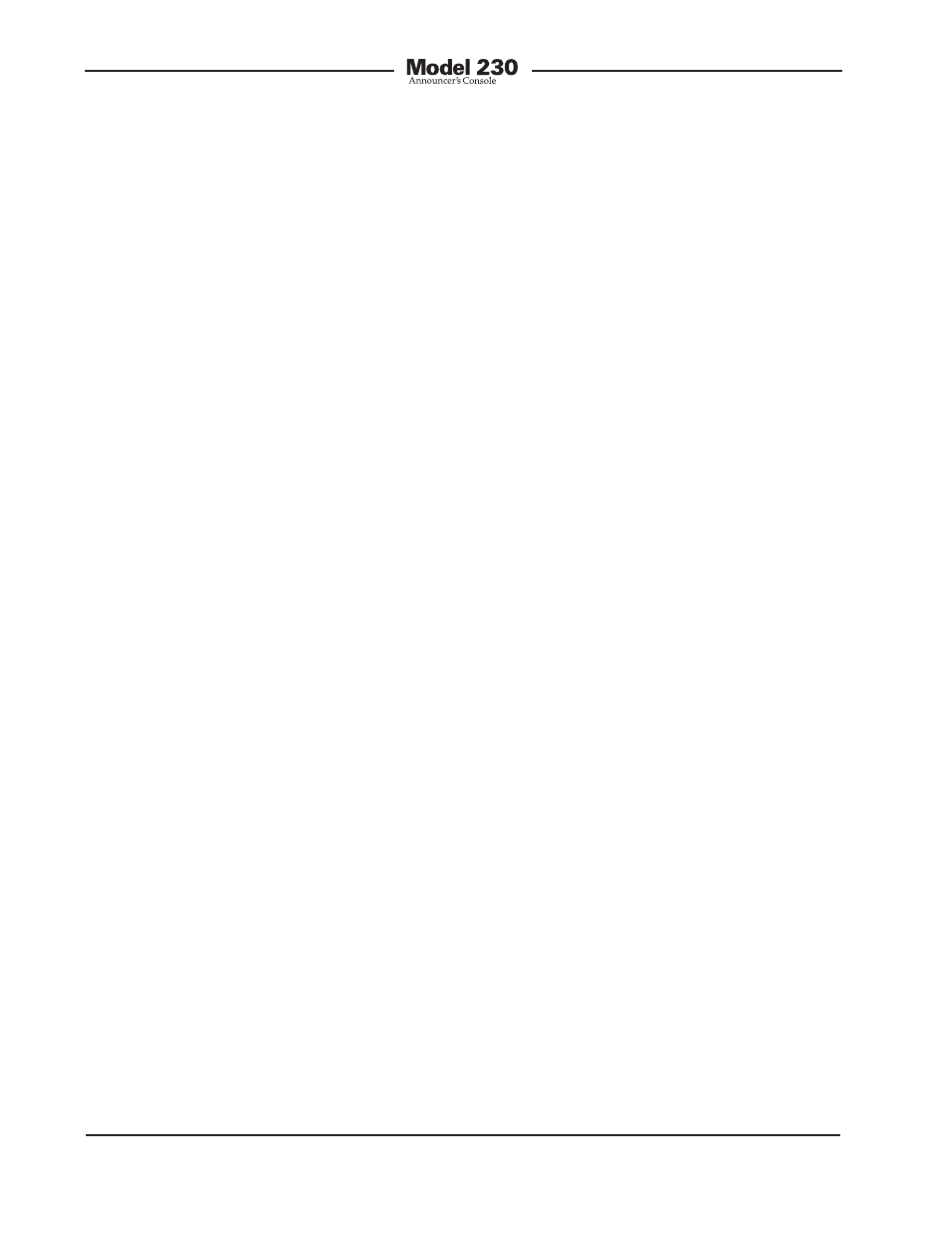Phantom power, Symptoms of insufficient power – Studio Technologies 230 2008 User Manual
Page 40

Issue 7, October 2008
Model 230 User Guide
Page 40
Studio Technologies, Inc.
Model 230’s front-panel controls proved
to be sufficient for the user to be able to
establish the desired listening level. When
talkback audio was routed to the intercom
channels a fixed level for use with both
RTS and Clear-Com systems also proved
to work well. This was mainly possible due
to the excellent dynamic-range-control
provided by the compressor circuit. Its
threshold (2 dB above Model 230 internal
nominal level) and compression ratio (5:1)
resulted in excellent talkback-to-intercom
audio. So in the end, no level or compat-
ibility switches of any kind were required
to achieve the desired “listen” and “talk”
performance.
The above paragraphs may elicit howls
of protests from a host of engineers and
intercom system experts. But for years
we’ve heard differing reports as to the
actual nominal audio levels for RTS and
Clear-Com systems. The “in-the-know
cats” agreed that RTS TW intercom (and
IFB) was –10 dBu, a value that we con-
firmed in our tests. But the nominal level
for Clear-Com was variously reported as
–20, –15, –12, –10, and “you know, the
Clear-Com level!” It’s most likely that early
Clear-Com systems did use a nominal
level in the –20 dB range. But after making
controlled tests, the contemporary equip-
ment seemed to be much closer to –10
dBu. And with the limited dynamic-range
control that we experienced, the actual
level during operation may vary widely.
That’s why intercom interface sensitivity or
compatibility switches, or rotary controls
were not included in the Model 230. But
just in case a change is ever required,
key intercom-interface gain levels are set
using socketed resistor pack devices.
In conclusion, the engineers at Studio
Technologies are always open to learning
more. Additional information from the
field concerning such topics as intercom
system levels, impedance matching, and
DC power sourcing would be welcomed.
Stopping by our offices for an in-person
chat would be also great. (And bringing
along pizza and beer for a tech-talk ses-
sion would certainly get our attention!)
Just park the production trailers on the
street!
Phantom Power
The Model 230 provides a 48 volt nominal
source of phantom power to support con-
denser-type microphones. It’s designed
to meet the P48 requirements as specified
in the IEC 61938 standard. The circuitry
is very simple: two 6.81 k ohm resistors
provide a path from a 48 volt DC source
to pins 2 and 3 of the microphone input
connector. The resistors and the power
source work together to provide the
required 48 ±4 volts, up to a maximum
current of 10 milliamperes.
Symptoms of Insufficient
Power
A core part of the Model 230’s internal
circuitry is a switch-mode power supply
that produces +48 volts, +12 volts,
+5 volts, and –12 volts. This power supply
circuit works very well as long as it is “fed”
with sufficient input voltage and current.
“Sufficient” is defined as a minimum of
24 volts on the IFB input and 20 volts on
the external 24 volt DC input. The neces-
sary current, 125 milliamperes for the
IFB circuit and intercom line and 90 mil-
liamperes for the external source, must
be supplied over their respective voltage
ranges.
It’s worth discussing what will happen
if any of these power sources fall below
